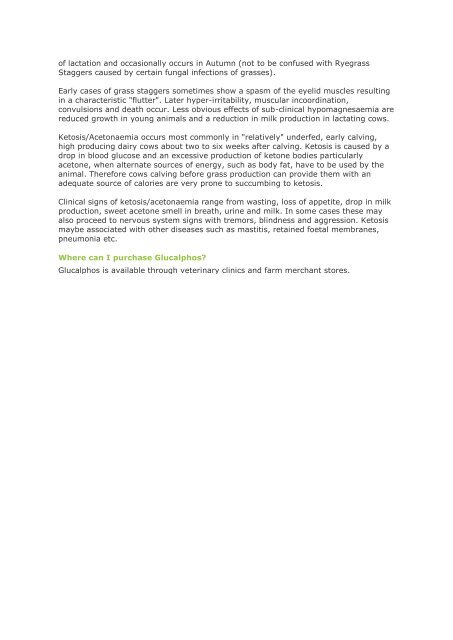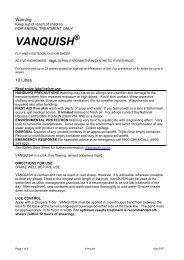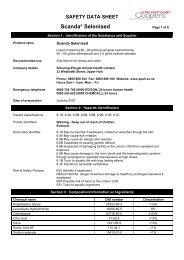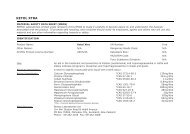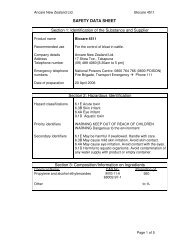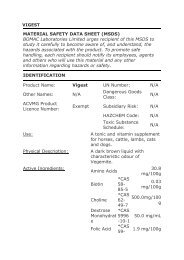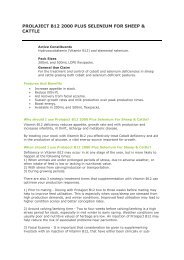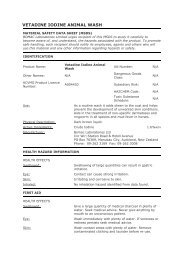GLUCALPHOS - My Farm
GLUCALPHOS - My Farm
GLUCALPHOS - My Farm
Create successful ePaper yourself
Turn your PDF publications into a flip-book with our unique Google optimized e-Paper software.
of lactation and occasionally occurs in Autumn (not to be confused with Ryegrass<br />
Staggers caused by certain fungal infections of grasses).<br />
Early cases of grass staggers sometimes show a spasm of the eyelid muscles resulting<br />
in a characteristic "flutter". Later hyper-irritability, muscular incoordination,<br />
convulsions and death occur. Less obvious effects of sub-clinical hypomagnesaemia are<br />
reduced growth in young animals and a reduction in milk production in lactating cows.<br />
Ketosis/Acetonaemia occurs most commonly in "relatively" underfed, early calving,<br />
high producing dairy cows about two to six weeks after calving. Ketosis is caused by a<br />
drop in blood glucose and an excessive production of ketone bodies particularly<br />
acetone, when alternate sources of energy, such as body fat, have to be used by the<br />
animal. Therefore cows calving before grass production can provide them with an<br />
adequate source of calories are very prone to succumbing to ketosis.<br />
Clinical signs of ketosis/acetonaemia range from wasting, loss of appetite, drop in milk<br />
production, sweet acetone smell in breath, urine and milk. In some cases these may<br />
also proceed to nervous system signs with tremors, blindness and aggression. Ketosis<br />
maybe associated with other diseases such as mastitis, retained foetal membranes,<br />
pneumonia etc.<br />
Where can I purchase Glucalphos?<br />
Glucalphos is available through veterinary clinics and farm merchant stores.


